Affiliate disclosure: This post may contain affiliate links. Please see our Privacy Policy.
When we found our off-grid compound, I assumed that I’d have to give up just about every power-consuming modern luxury. We went through our kitchen cabinets and tested each appliance with a kill-a-watt electricity usage monitor and put just about everything in the moving sale pile. We assumed our off-grid system wouldn’t be able to support 1000 watts for a dehydrator or 1200 watts for grandma’s antique waffle iron.
At the last minute, we packed them anyway and figured we could always get rid of them later.
The reality of living off the grid turned out to be quite a bit different than we expected. Instead of the chronic electricity shortage we expected, more often than not we had far more electricity than we could use. We moved in October and each morning by 11 am our batteries were fully charged. The rest of the day’s production and peak production levels throughout the afternoon were just going to waste.
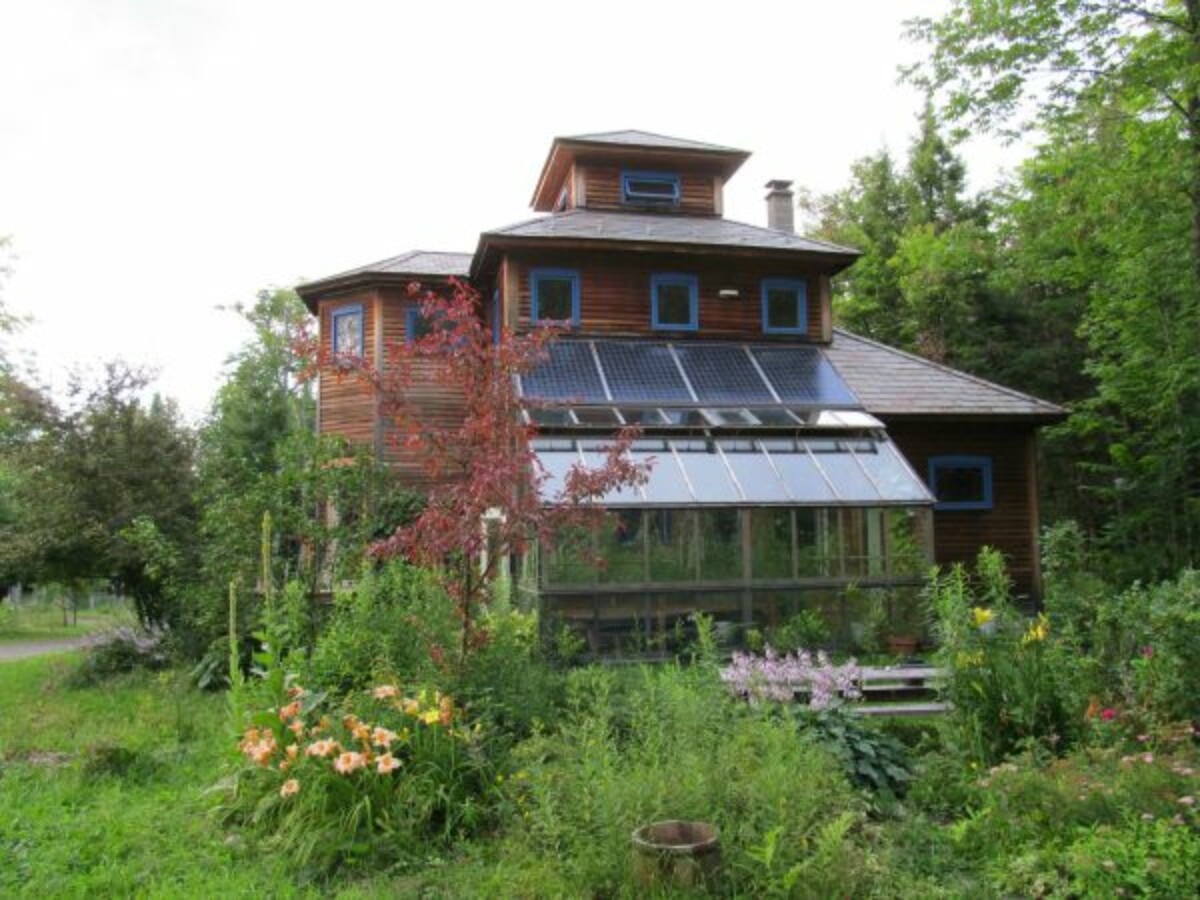
Table of Contents
Not only were we able to use high electricity usage appliances, we actually felt like we had to use them to consume all the excess “free” electricity our system was producing. We bought a countertop electric oven and a countertop induction burner to save on oven and burner propane and make use of our free electricity.
We experimented with an electric chainsaw for our wood cutting, hoping to be able to turn the extra sun energy in the summer into cordwood. In the end, we found that electric chainsaws are built for people who cut up 1 tree a year, not homesteaders who are trying to put up 8 to 10 cords of wood. Back to the trusty gas saw.
We make all of our income living off the grid without desk jobs (here’s how) but we don’t make much. Living off the grid is surprisingly affordable, and we’re living on well below the median income for an American household. It’s enough to get by, and enough to stay happy, all while enjoying our time in paradise.
Still, without a lot of extra money laying around, we have you use up every last bit of “free” we can get, and this house gives us a lot of free electricity. Here’s how we use it…
1. Unlimited Free Hot Water
Traditional solar hot water doesn’t use photovoltaic panels. They’re stand-alone systems where the water actually runs through it and is heated by the sun. They can be hit or miss on cloudy days or in northern climates.
Our system is a bit different. Our water heater is a standard household electric water heater, and it functions as our solar dump tank. Once the batteries are full, the charge controllers are programmed to dump excess solar production into our electric water heater.
For cloudy days and during the winter months, we have a loop of our radiant floor heat system run through the water heater so that we can make wood-fired hot water. Our external boiler runs on anything we can harvest here from our land, including pine and hemlock that can’t be burned in a traditional wood stove.
There’s a remote thermometer that runs from the electric water heater in the basement up to the first floor, and during midsummer, I’ve seen that tank hit 160 degrees. Honestly, that’s dangerously hot and we’ve had to be careful turning on the tap. Some days, we have “mandatory” bath time just to draw down our hot water supply.
2. Whirlpool Bath Tub
If you’re going to have to take mandatory baths to use up your oversupply of hot water, you might as well do it in style. My husband and I can comfortably sit side by side in our whirlpool bathtub, and our feet don’t even reach the far end.
I love baths, and after our tub, I’m ruined for any other normal suburban bathtub. Sure, we can’t run the jets at night or midwinter, but that’s not exactly a tragedy…
This is our one totally gratuitous extravagance. Does a house really need one? Of course not. But you’re only going to install a bathtub once.
A whirlpool tub is only $300 to $400 more expensive than a normal tub (if you bargain hunt) and you’ll be soaking your tush in that thing for decades, powered by free electricity.
It’s worth it. After a long day hand splitting wood or digging in the garden, you’ll thank me. Seriously.

3. Radiant Floor Heat & Super Insulation
In our last home, we never felt warm. Our heat worked perfectly fine, but the floors were always cold. You could feel the cold seeping into your bones, even through rugs and socks.
Places where rugs were impractical, like the kitchen, were especially bad. Who wants to feel cold in the kitchen? It dampens the spirits.
Radiant floor heat has really improved our quality of life, and it’s all run using off-grid power and DC electric straight from our batteries.
Since keeping the inverter running full time can be taxing on your power resources in the winter, having DC electric pumps that circulate the fluid from our external boiler means that our house and floors are toasty warm no matter the weather. It often hits -30 here, and in January it’s not uncommon to go a whole week where highs never come above zero.
Around here, good heat is essential for both health and morale in the wintertime. I’ve never been warmer than since we moved off-grid. It just goes to show you, if your house is built right and well insulated, you might actually be warmer in the long run, even if you’re off the grid in the sticks.
4. Dehumidifier or Air Conditioner
To me, nothing says gratuitous and wasteful electricity usage like an air conditioner. I never had one living in town, it just seems so wasteful in the long run. Using so much electricity to stay cool, and contributing to the bigger problem of climate change, in the long run, to allow for just temporary comfort.
Unlike suburban living, where peak usage can cause brown-outs on hot summer days, we actually have the most electricity to spare on those brutally hot mid-summer days.
Sure, we turn them off at night, but being able to take the edge off during a mid-day siesta before going back outside to enjoy the garden once things cool down is a welcome break. Off-grid, I don’t have one shred of guilt about it.
5. Dishwasher
We’d never had a dishwasher before moving off-grid. Normally in our house, after dinner each night the dishes are done before bed, but off-grid, the evening isn’t exactly the best time of day to run the water pump. Now dishes are loaded into the dishwasher, and it’s kicked on mid-day the following day.
While a dishwasher seems like a bit of an extravagance, it actually helps us use our electricity during peak production without having to give up daylight outdoor working hours. Midday we’d rather be out cutting wood or working in the garden, not stuck inside catching up on dishes. This way, we’re out working and our house is busy putting our free electricity to good use.
6. High-Speed Internet
Since we both make our full-time living off-grid, remote work online is essential to making ends meet. We assumed we’d be commuting to some form of co-working space, but there are actually a surprising number of options for high-speed internet even for rural off-grid homes.
Satellite internet is generally pretty dependable if you’re not completely closed in by trees. Others we know use cell signal internet that plugs directly into an adapter on their computer.
In our case, we have a tall tower for our wind turbine that extends above the treeline. That same tower serves as our antenna for radio internet. Most times when power and internet are out in town from ice storms or bad weather, we never even know it.
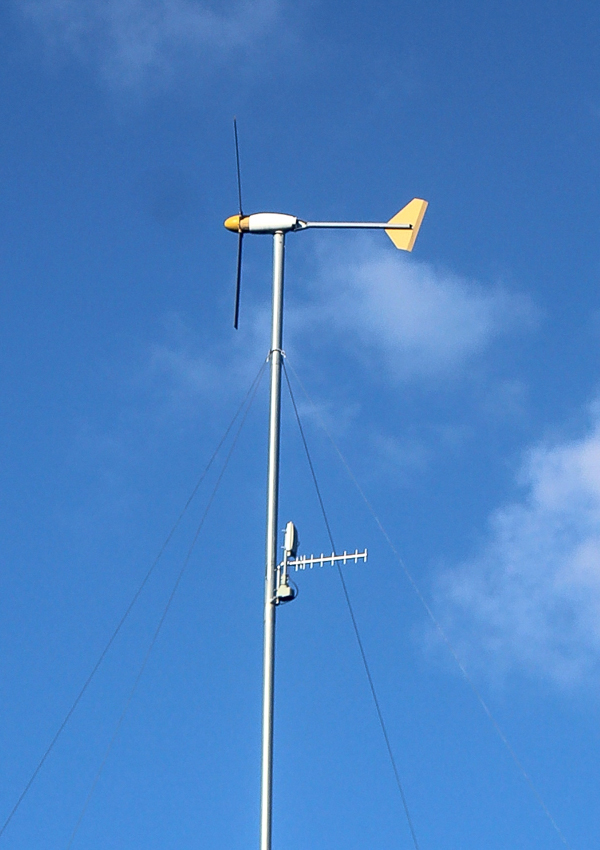
7. Fully Stocked Summer Kitchen Powered by Free Electricity
In the summertime, most people don’t cook for fear of heating up their house and making it unbearable. What if you could take all that outdoors, keeping it cool inside? Sure, you could set up a rickety camping setup with a small propane burner, but what if you actually want to cook real food?
Since we have so much surplus electricity in the summertime, it made sense to invest in electric appliances that we operate in an outdoor summer kitchen. We run a small electric oven and an induction burner for much of our cooking. We’re also really fond of our instant pot, which we can load up the night before and program to run during peak production the next day.
Who would have thought an instant pot would be practical off the grid? It actually makes managing our electricity much simpler because we can cook electrically using a timed cycle that utilizes peak production and allows us to prep ahead so we don’t waste daylight cooped up inside cooking.
For half the year we cook with free energy and don’t heat up the house. The other half of the year, we either cook indoors on a propane stove, or during the really cold months we cook on our wood stove. That means we use hardly any propane, and the vast majority of our cooking is done with free energy, either solar or wood powered.
Often enough, just for fun, we go camping about 100 feet from the house and bake in our dutch oven. Now that’s some truly “off-grid cooking” no electricity required.
We do that by choice and for fun, not because we have to. Much of the year we’re kicking on our solar-powered instant pot.
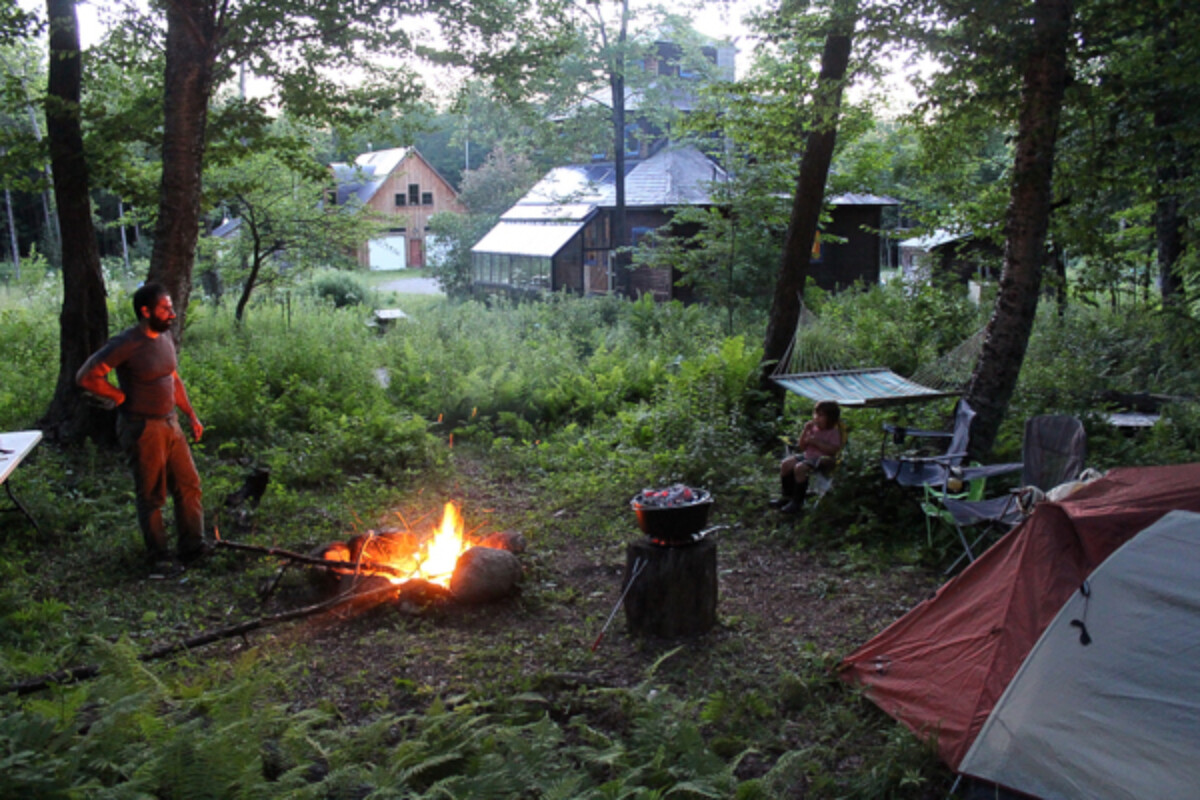
8. Attached Greenhouse
I love our greenhouse. Solar energy is a magical thing, and even in February when it’s 30 below outside we can sip coffee in our PJ’s toasty warm at over 90 degrees on sunny days.
It’s set up to vent into the house during the winter, providing ample free heat. We actually don’t run the heat for weeks at a time mid-winter sometimes, even in our northern climate.
It also makes it simple to grow herbs, cooking greens and veggie starts any time of the year. The ability to grow food at any time of the year saves us money, but it also enables us to grow crops we otherwise wouldn’t.
Rosemary is cold sensitive and can’t survive Vermont winters, but our plant is huge and gets bigger each year. Other crops like ginger, figs and lemons also grow well in our greenhouse in the winter and are then put out in pots for the summer.
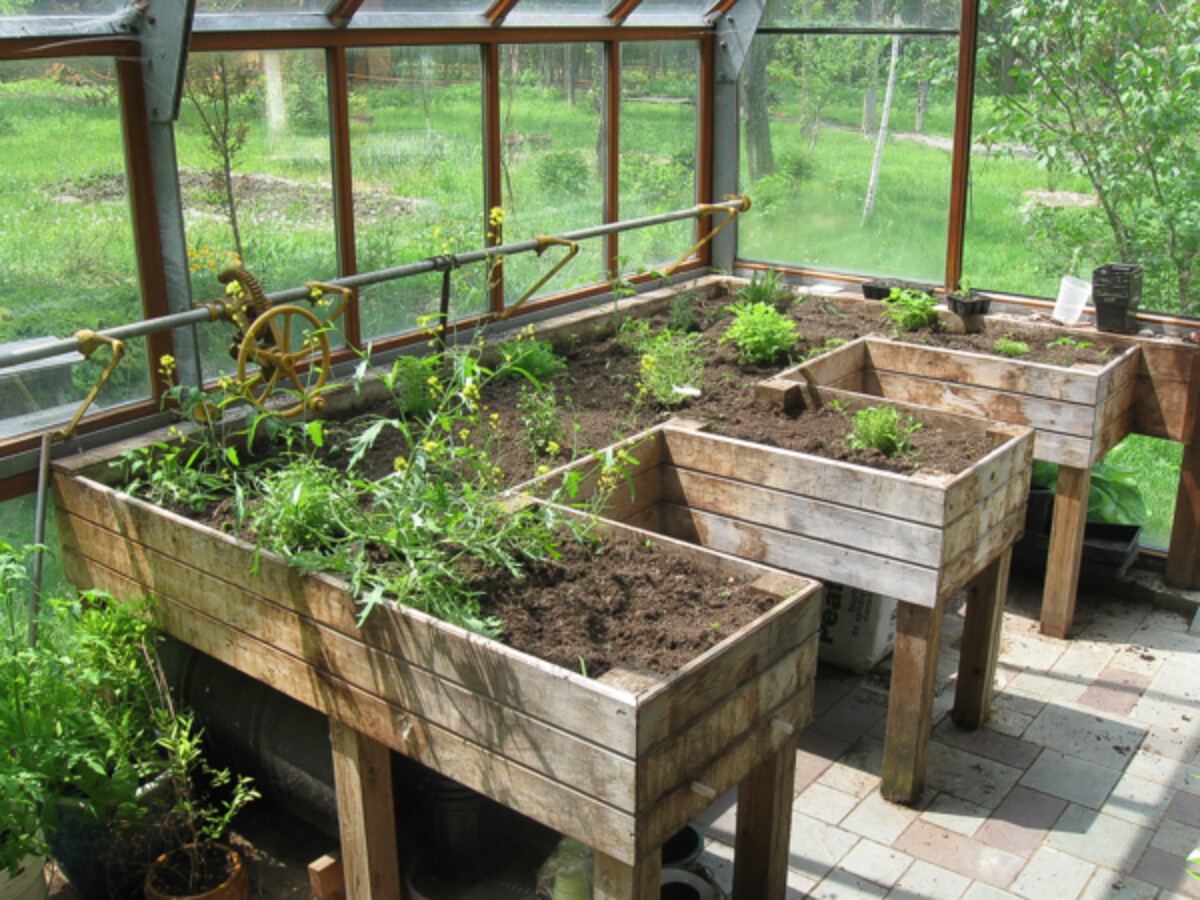
9. Passive Solar Heating & Cooling
It makes sense that an attached greenhouse would be great for passive solar heating in the wintertime, but doesn’t it get really hot in the summertime? Nope.
The very top of our greenhouse is our solar panels. As the sun angle changes and the sun gets higher in the sky in the summertime, our greenhouse solar panels shade the whole side of the house. Opening the doors and top vent means that the house stays shaded and cool, and the greenhouse itself stays the ambient outdoor temperature.
As a result, our attached greenhouse and solar panel setup provides for both passive heating AND cooling year-round.
10. Access to Nature
I hear all the time about urban food deserts, where people simply cannot access clean healthy food. In that scenario, they definitely don’t have access to even the most basic nature experiences. Nature is outside our doorstep, and with it ample space to grow our own food and acres of woods where we can forage.
Deer visits are a daily occurrence, and a flock of 20+ turkeys overwinters outside our back door and sustains themselves on nuts and crab apples that we leave intentionally to support “our” turkeys.
This is why we’re here. Sure, a hot tub is nice. But this, waking up literally to the birds singing (or occasionally to an overzealous woodpecker…) is why we’re here.
This is where we want our kids to grow up. This is where we want them to come home to. Living in and breathing in fresh air.
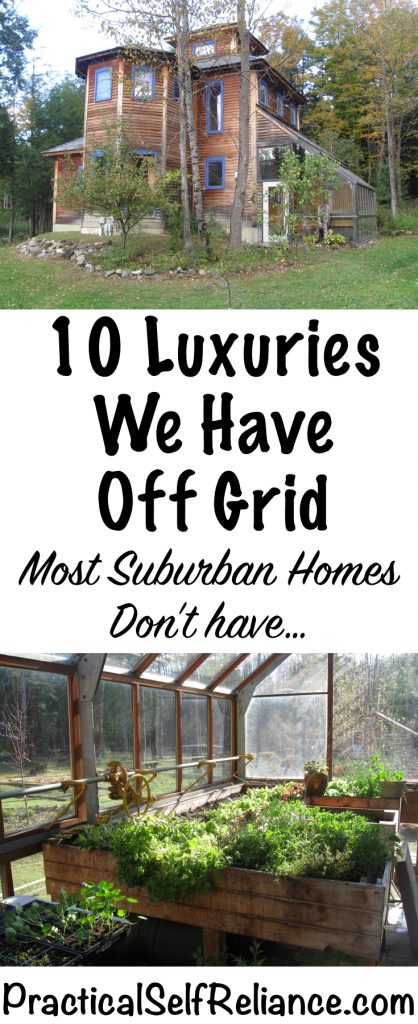
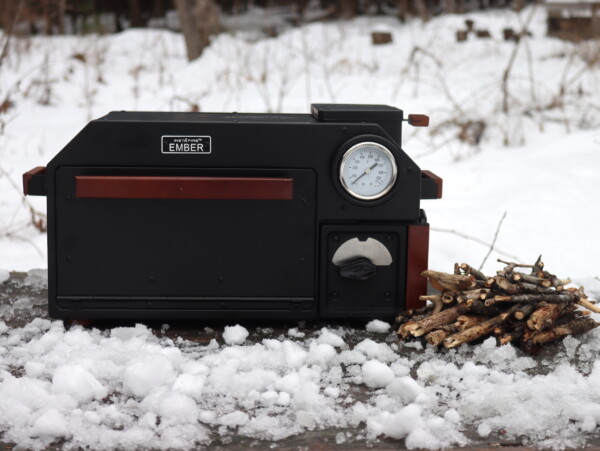
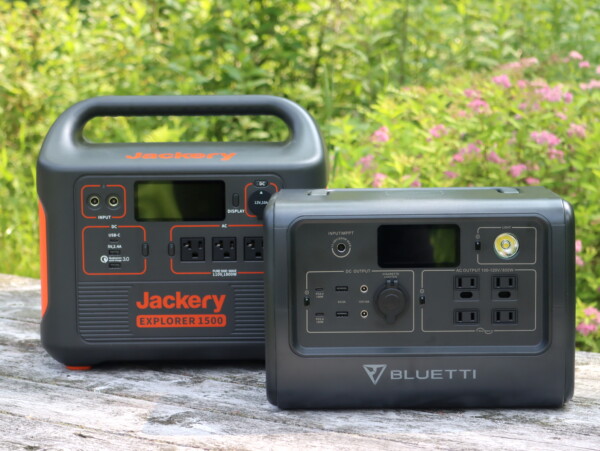
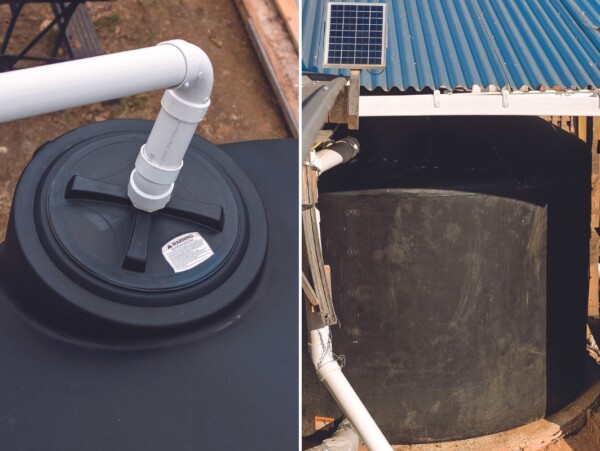
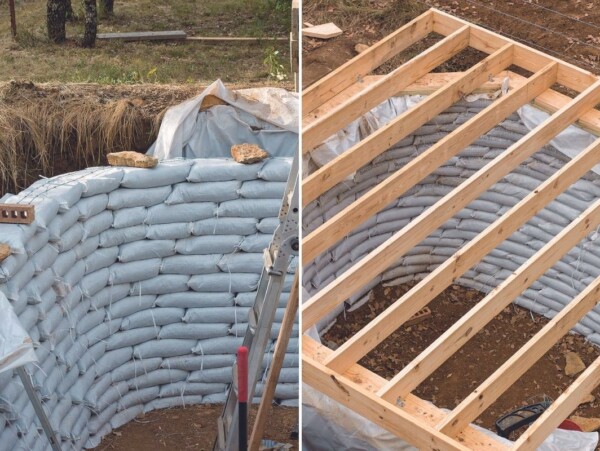










Loved this article. We live off-grid and remote in interior Alaska. Unfortunately for us, we are sort of in a food desert here. Cannot do passive solar greenhouse here in the winter because temps drop to as much as -60F. We are in the midst of redoing our cabin as we have learned a lot that we have done wrong over the past 4 winters here and are working to fix things this summer. Hoping to have room for an indoor greenhouse this winter because we go through the winter without fresh veggies and this salad eater goes nuts about that. We also don’t have much in the way of wildlife that visits and those that do are black and grizzly bear and wolves. I do love your comments about your excess electricity as we kind of have been going through the whole thing and we haven’t even set up all our solar panels yet! Now I regret giving my instant pot and crockpot to my son thinking that I would never use them out here. LOL
Also, I signed up for your friend’s free blogging video and may well be signing up for the course. We are retired and it drives me nuts not to have an actual income, tho you are right….it doesn’t cost much to live off grid once you are set up. We do have a youtube channel that we are trying to build up if you are interested in seeing it…. Alaska Bush Living .. it is much more difficult than people know to make money with a youtube channel, it takes a long time to build up a following.
Thanks for sharing. We’re so glad you enjoyed the article.
I want information on off grid appliances
Here you go. https://practicalselfreliance.com/off-grid-appliances/ Let us know if you have any other questions.
There is so much information here it’s mind ogling. We are on the grid but only use it when we can’t do it the other way, like my big freezer. Our solar system is old and I am trying to replace one panel a year with better ones, I have only two battle born batteries but they are the best, struggling to add to them. We did not put our panels on the roof for two reasons, no roofers want to put a roof on a house with solar panels and not having them on the roof allows me to clean them off after a snow storm.. we have wood heat, two wood cook stoves, one in the garage and one in the house, the house one has a 40 gallon water tank hooked to it and it heats the water while cooking breakfast. It is plumbed into the system and can be used in the bath top. We also have a wood stove that heats the house, attached to that are two large water tanks, the first is preheated by wood stove, it is attached to the second tank which is propane. When the preheated water comes into the propane tank it mostly never kicks on or requires minimal propane to bring it up to heat. We also have pegs tubing closed under floor system also heated by wood stove. At one time hubby plumbed our hot tub through stove but it got too hot,lol.
This was a great article!
Often, “off the grid” living is so ramped up to use as little electricity as possible.
No one talks about what you do when you have an excess of electricity to use up, lol!
It must be wonderful to only have to worry about the cold. 😛
Often, it is easier to keep warm, or to heat a place, rather than to cool it.
I am in Australia, on the SE coast, and here in the height of Summer, we get to temps of about 104F (which is about 40C) so actually, air conditioners are not a luxury, but a very real necessity!
In addition to that, not only is the cooling needed, but the moisture removal from the air too, as without it, everything starts growing fuzzy mould. Not great, lol!
But your setup sounds great though!
Even though we live in suburbia, I still want to set up SOMETHING to cook with in case of no electricity.
I have plans for a pizza oven, which of course, you can cook anything you like in there, and I do have a movable fire pit (a hanging agricultural tilling plate) so I can cook with fire, but it’s still not the best setup.
We’ve just had solar panels fitted to our roof recently-ish, but any excess just goes back to the grid.
It’d be nice to have them fitted to some actual battery banks, but that’s another expense we can’t do yet, lol!
Thanks for writing stuff like this.
It might just be your normal, boring everyday life, but to those that haven’t got there yet, it’s a valuable source of knowledge from someone who is living it!
You’re very welcome. We’re so glad you enjoyed the post. Thanks for sharing.
Sooo inspring! Thank you for sharing!
You’re very welcome. So glad you enjoyed it.
So much of this reads like the 10 year plan I have for our house we just got last year. We’re firmly Vermont-suburban (Close enough to Burlington to be on the bus line, but far out enough that there’s room to breathe), but with most of an acre of land and a house that’s aligned pretty perfect for solar. We’re still in the early stages of our plan (just got the electric upgraded so we can get a heat pump before next winter, separating the stone from the actual soil in the back yard so we have a hope to get a garden started) but we’re hoping to get everything solar powered in the next few years. With luck, soon we’ll be getting the best of both worlds
It sounds like you have a wonderful plan. You will have to keep us updated on your progress.